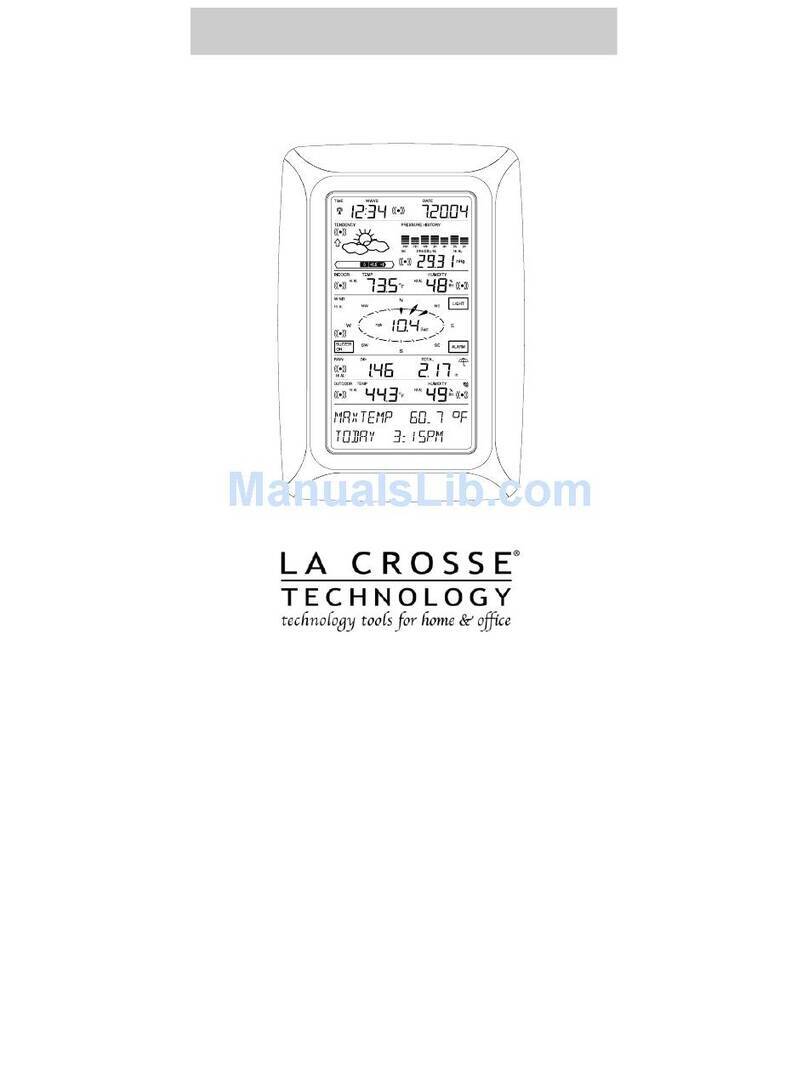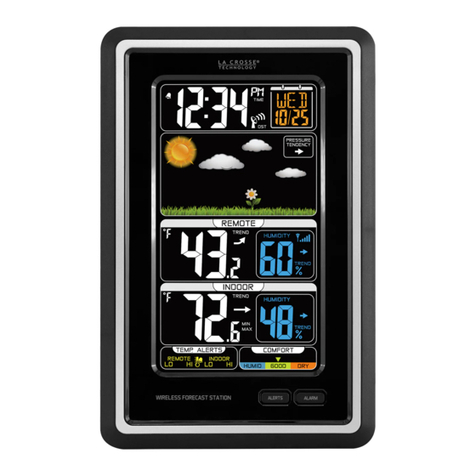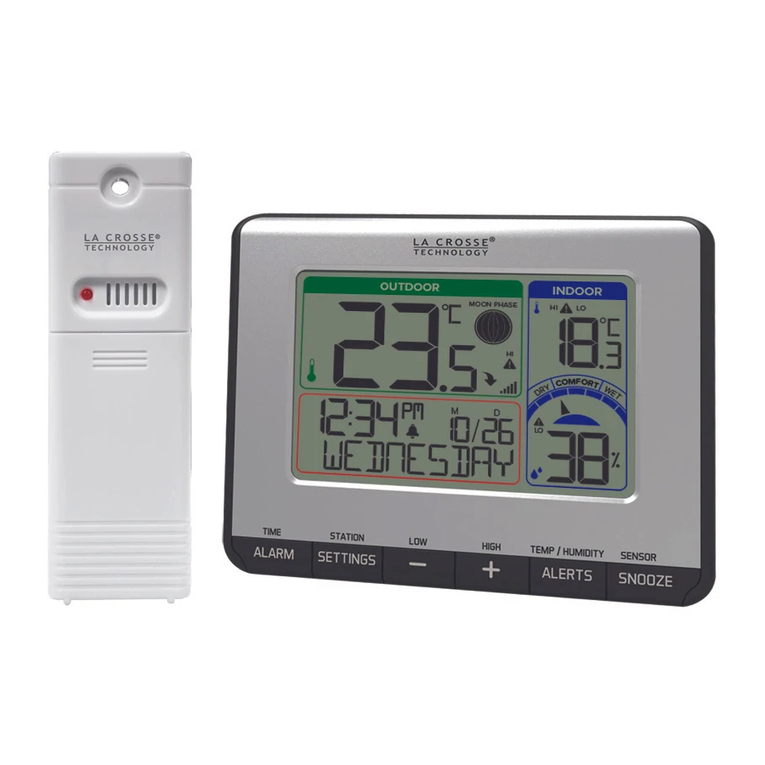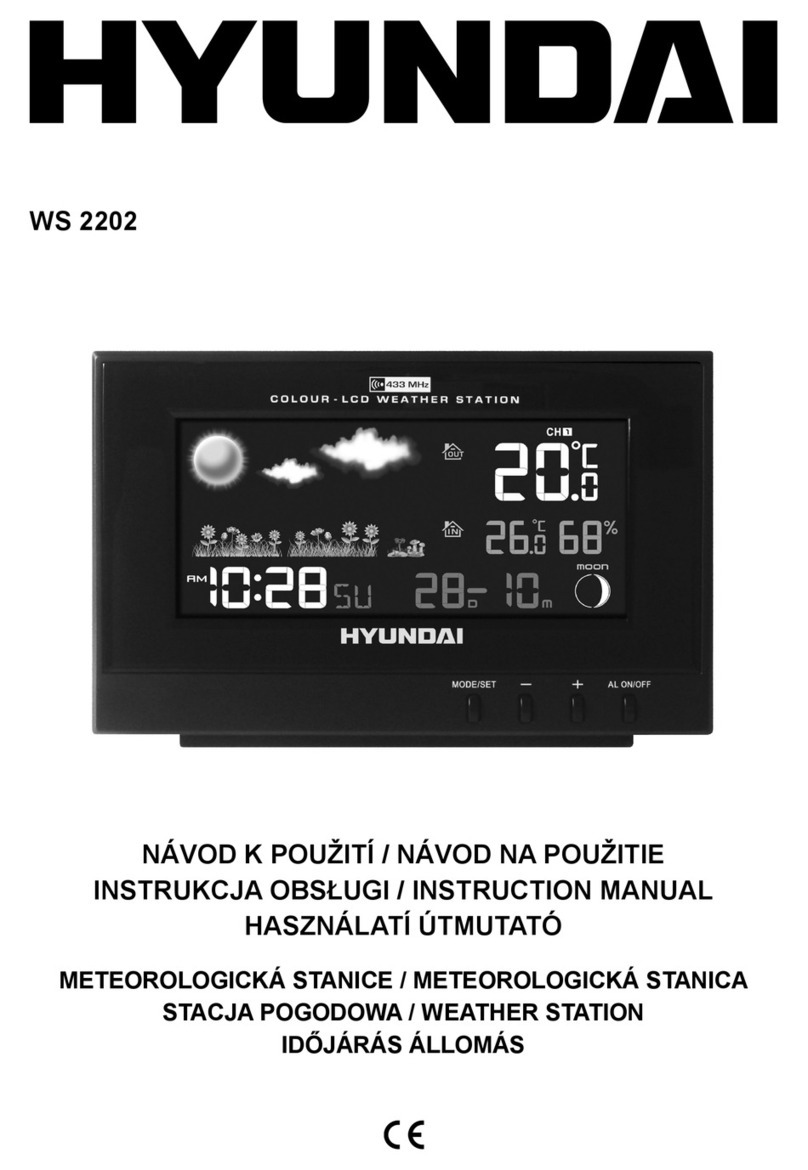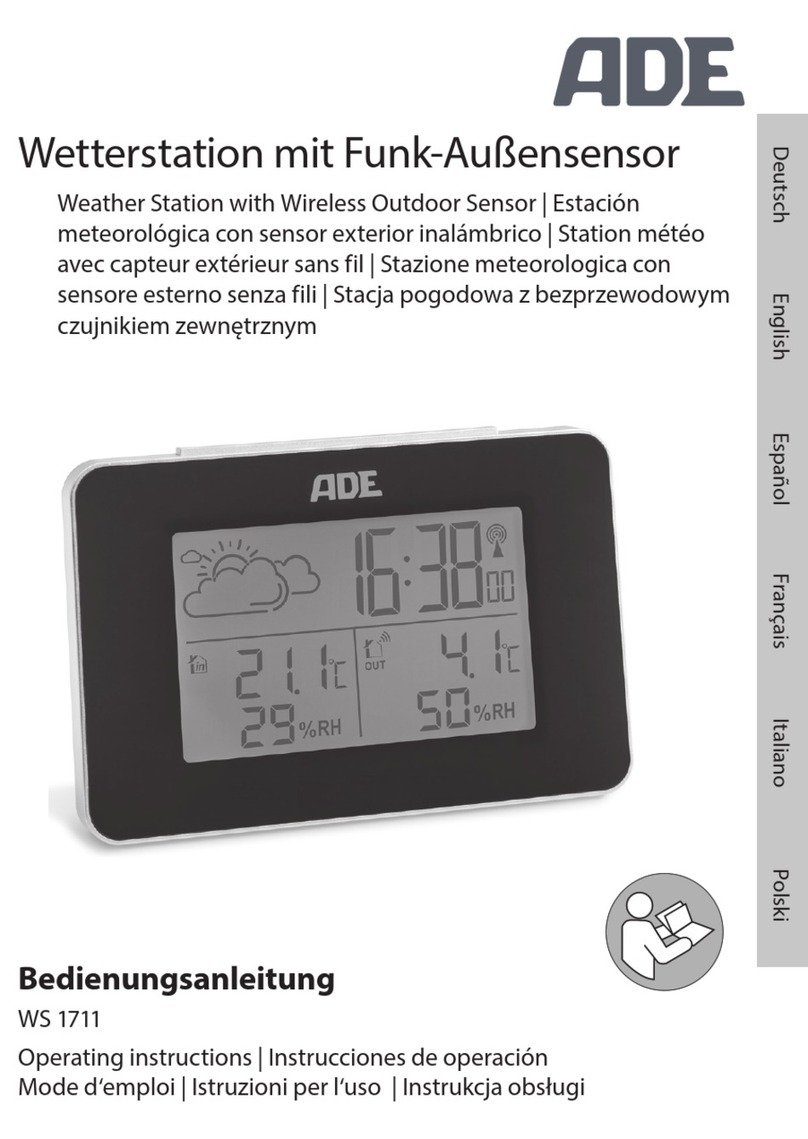La Crosse Technology Wireless Weather Station User manual
Other La Crosse Technology Weather Station manuals
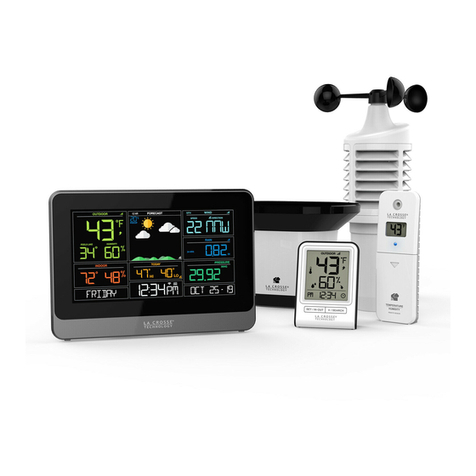
La Crosse Technology
La Crosse Technology C83100 User manual
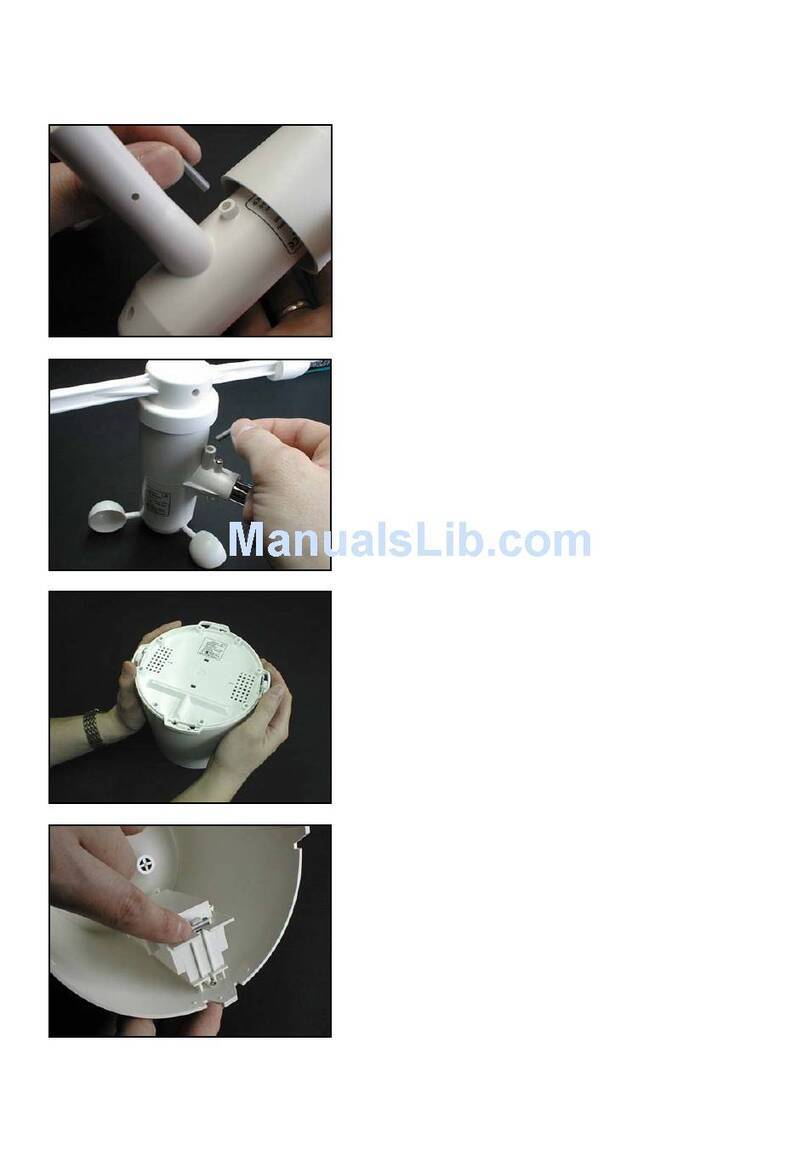
La Crosse Technology
La Crosse Technology WS-2510 Training manual

La Crosse Technology
La Crosse Technology WS-8120U-IT Installation guide
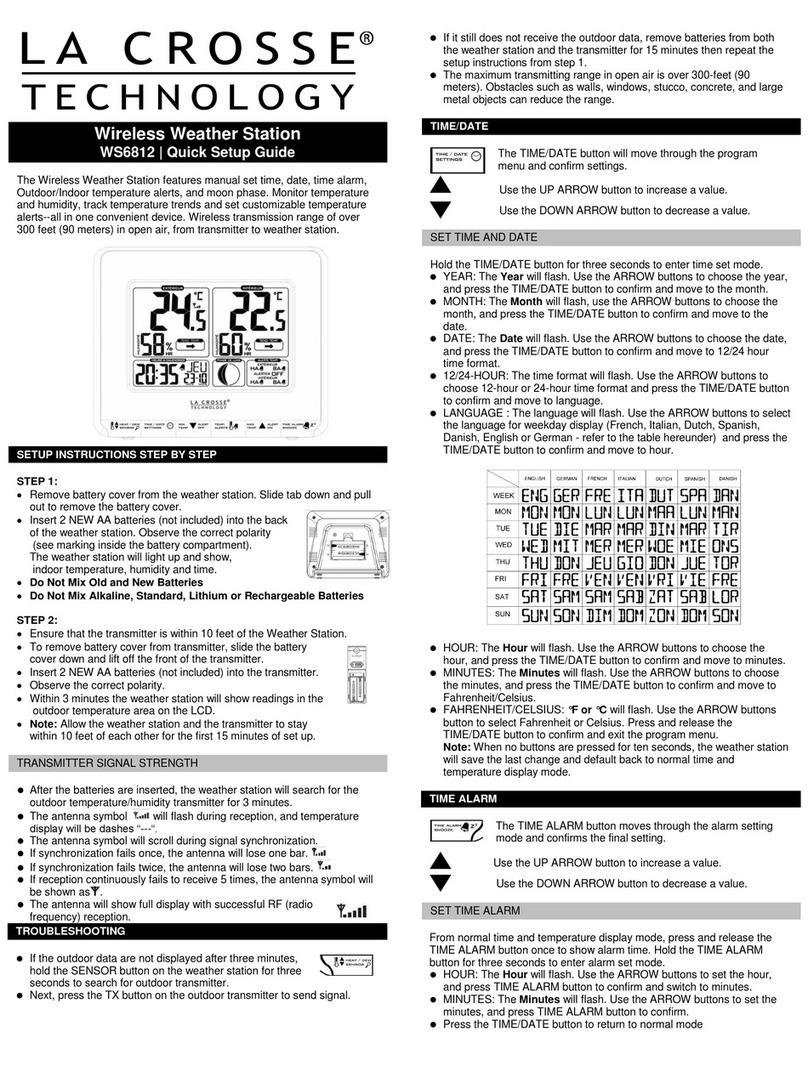
La Crosse Technology
La Crosse Technology WS6812 User manual
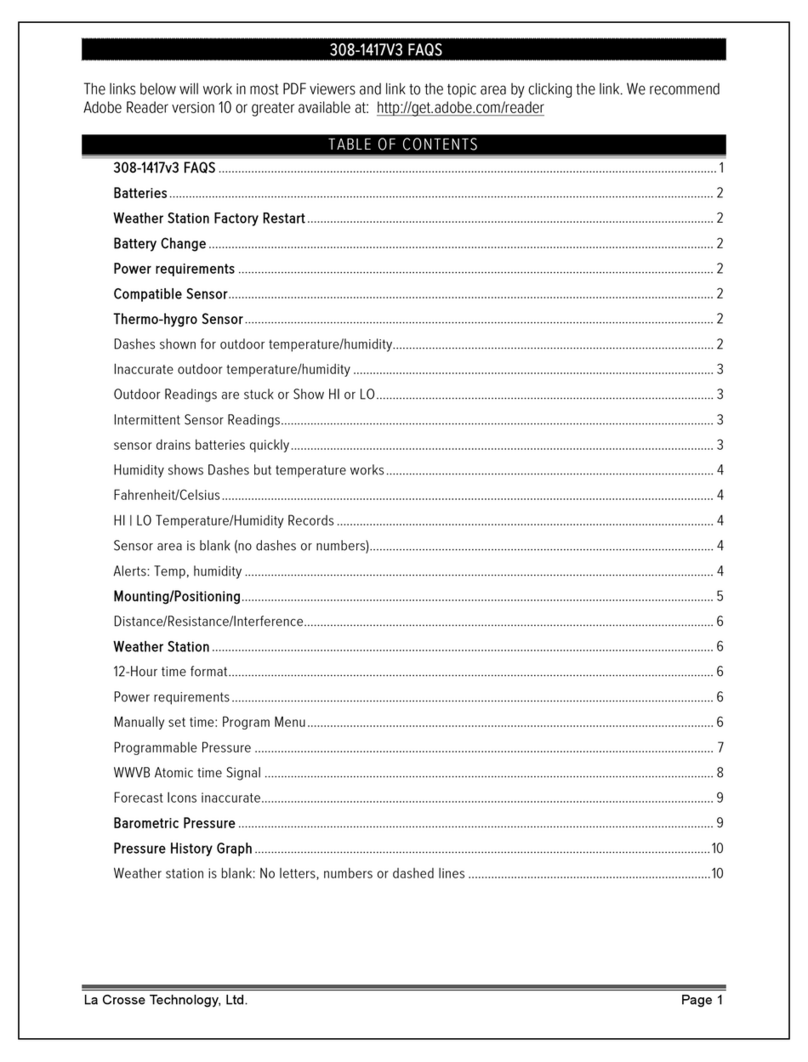
La Crosse Technology
La Crosse Technology 308-1417v3 Dimensions
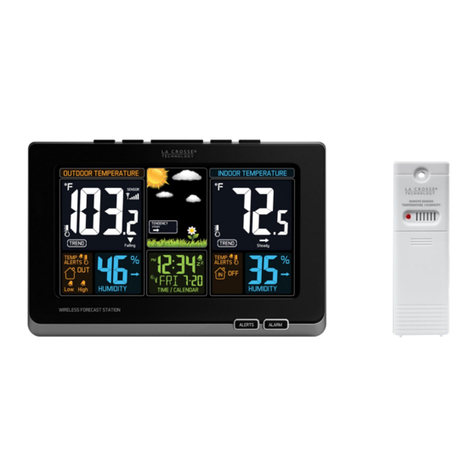
La Crosse Technology
La Crosse Technology 308-141WBV2 User manual
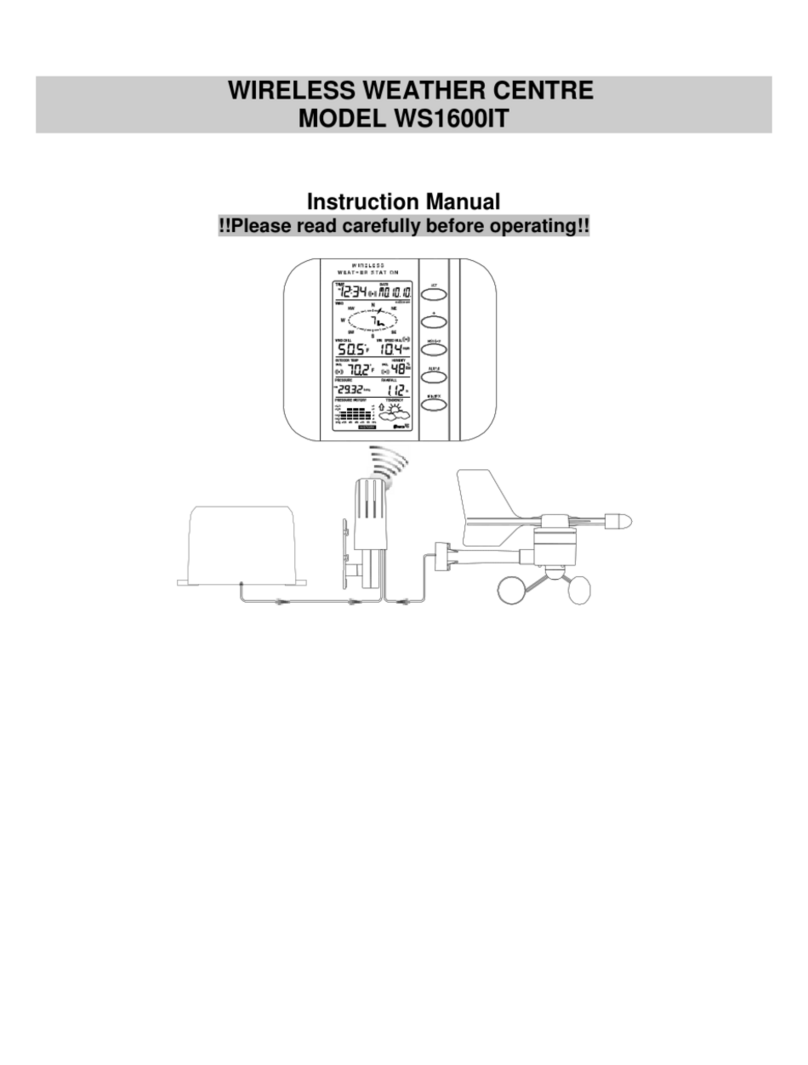
La Crosse Technology
La Crosse Technology WS1600IT User manual
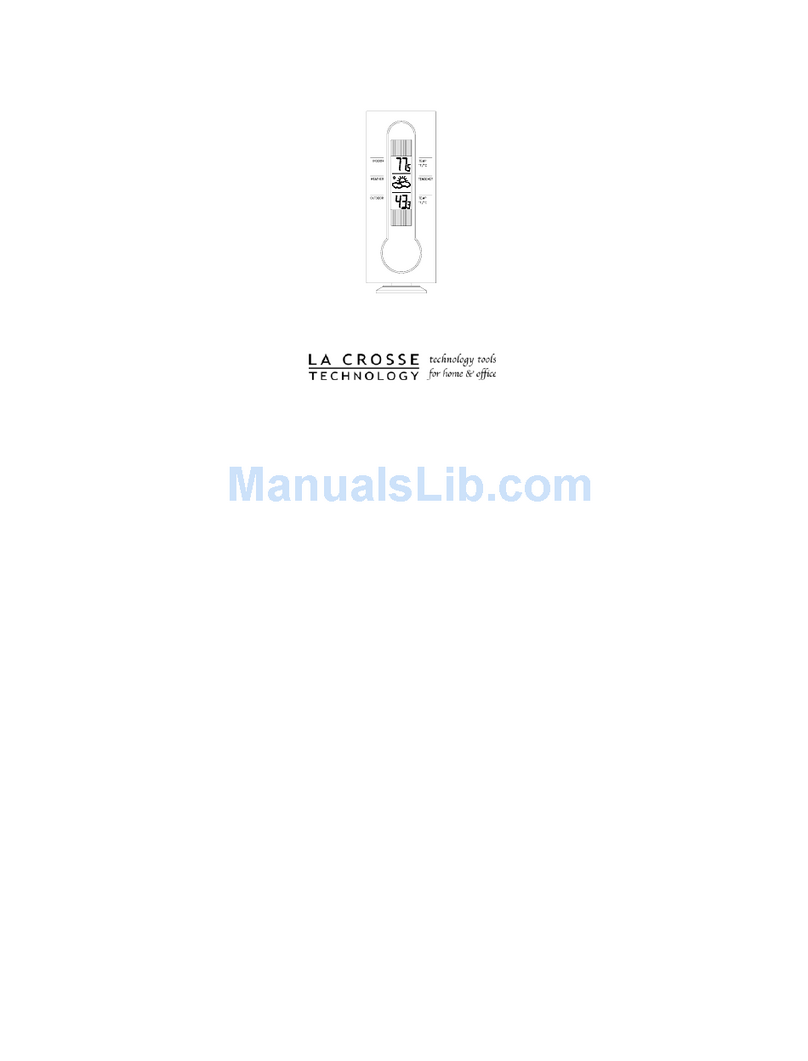
La Crosse Technology
La Crosse Technology WS-7032UF User manual

La Crosse Technology
La Crosse Technology WS-9047UIT-CA User manual
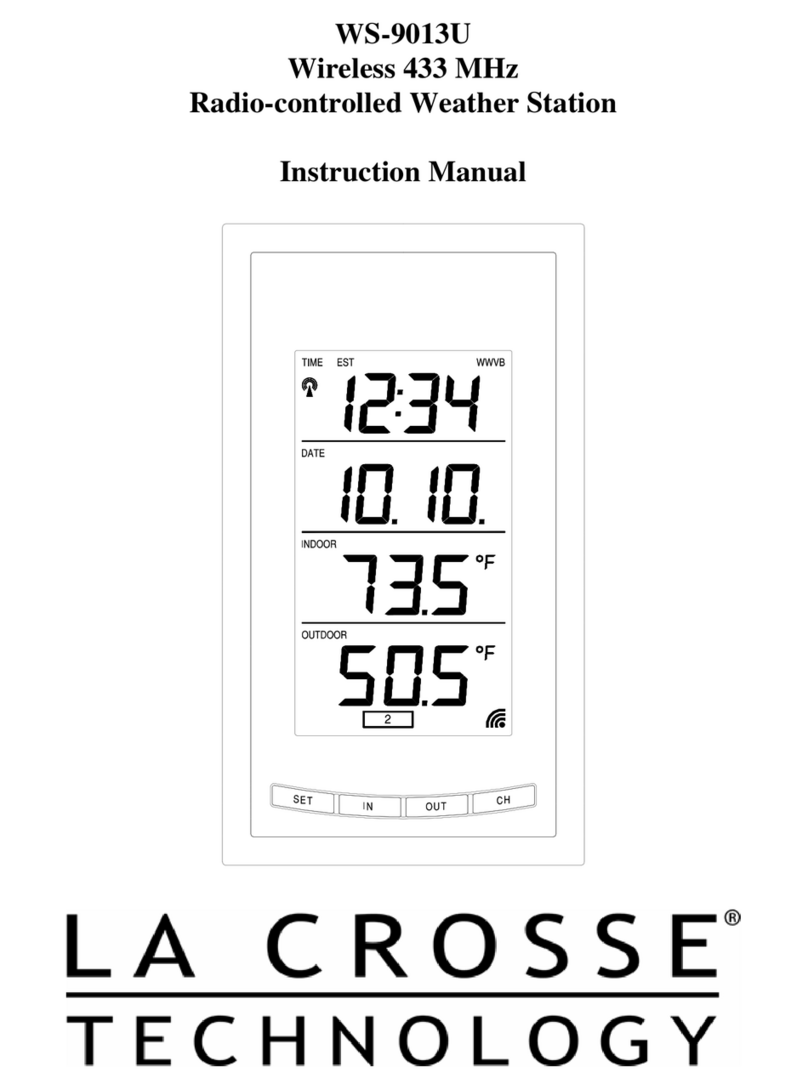
La Crosse Technology
La Crosse Technology WS-9013U User manual

La Crosse Technology
La Crosse Technology WS9090 User manual
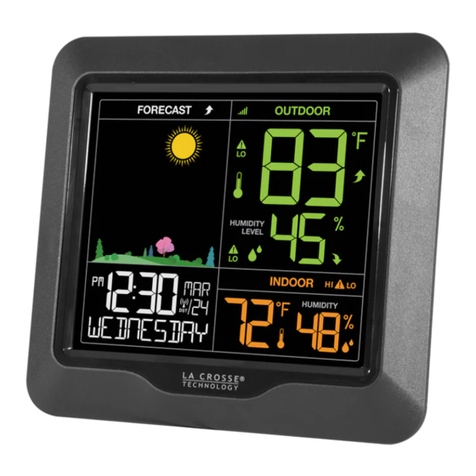
La Crosse Technology
La Crosse Technology S85814V2 Operating and maintenance manual
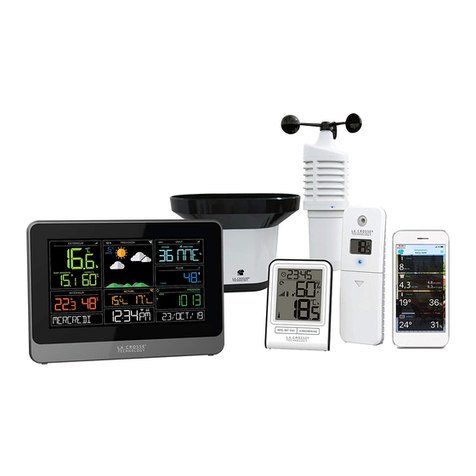
La Crosse Technology
La Crosse Technology WS6862 User manual
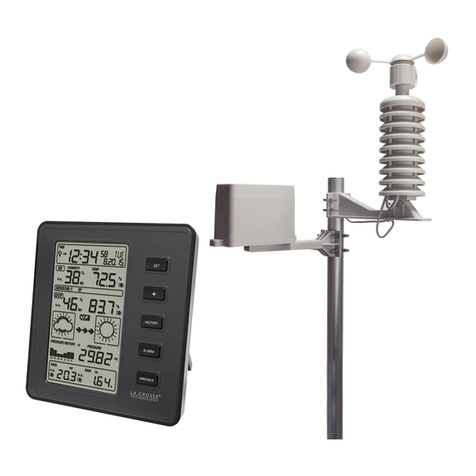
La Crosse Technology
La Crosse Technology 308-2316 User manual
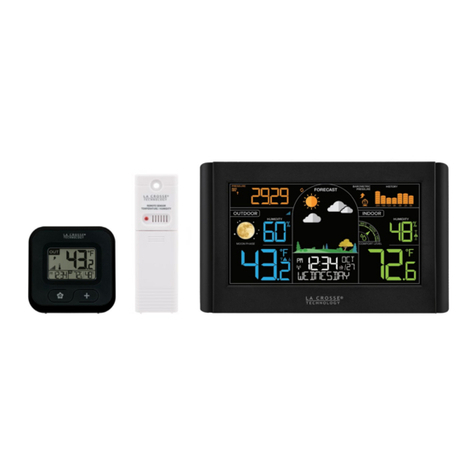
La Crosse Technology
La Crosse Technology S75617 Dimensions

La Crosse Technology
La Crosse Technology WS-9520U User manual

La Crosse Technology
La Crosse Technology 327-1417 Operating and maintenance manual
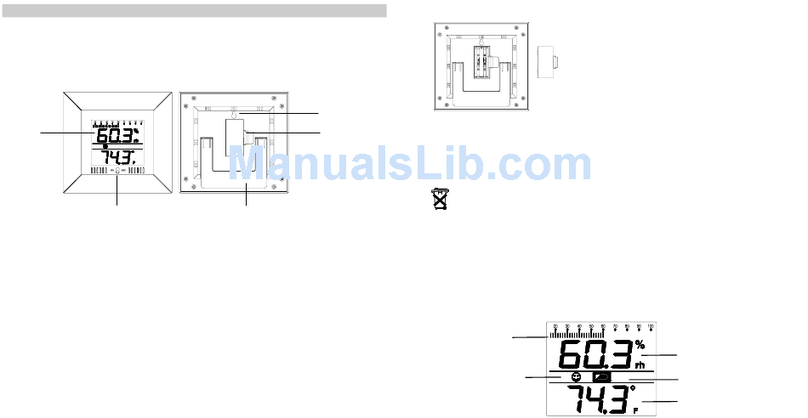
La Crosse Technology
La Crosse Technology WS-9410TWC User manual

La Crosse Technology
La Crosse Technology 308-1414M User manual
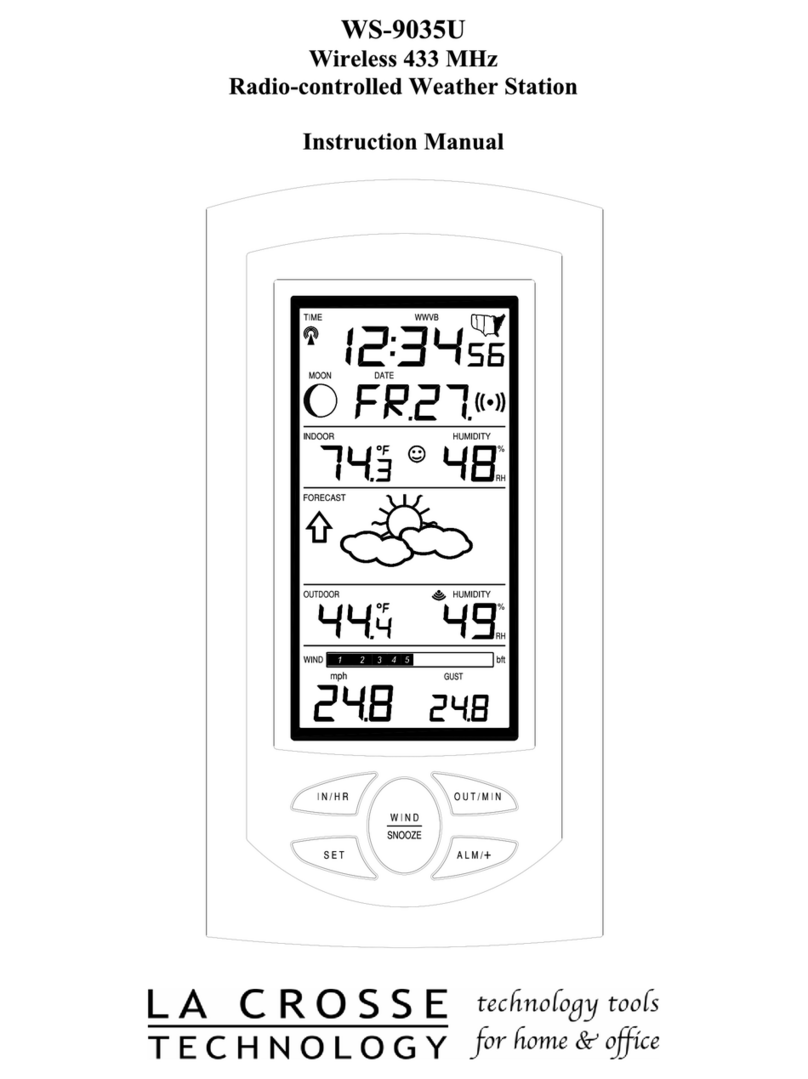
La Crosse Technology
La Crosse Technology WS-9035U User manual
Popular Weather Station manuals by other brands

WAREMA
WAREMA EWFS Weather station eco Operating and installation instructions

Auriol
Auriol z29592 Operation and safety notes

Auriol
Auriol 296289 Operation and safety notes

Hyundai
Hyundai WS 2266 instruction manual
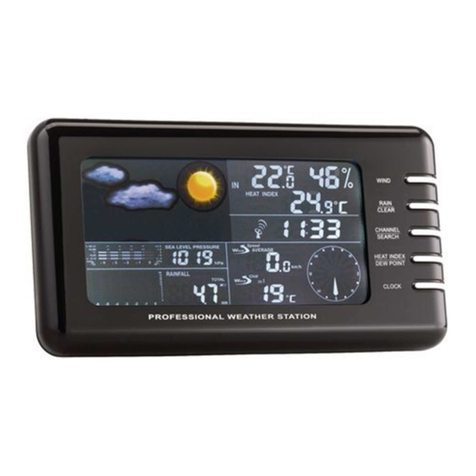
Ventus
Ventus W177 owner's manual
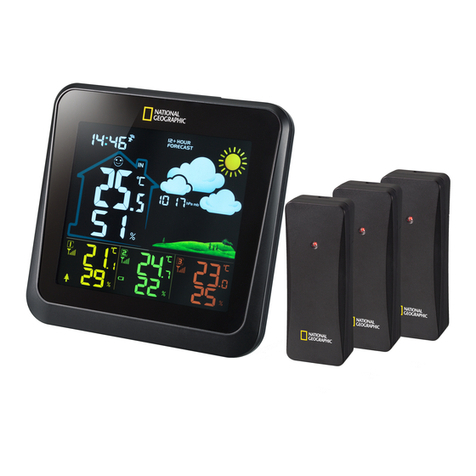
National Geographic
National Geographic VA Colour RC instruction manual
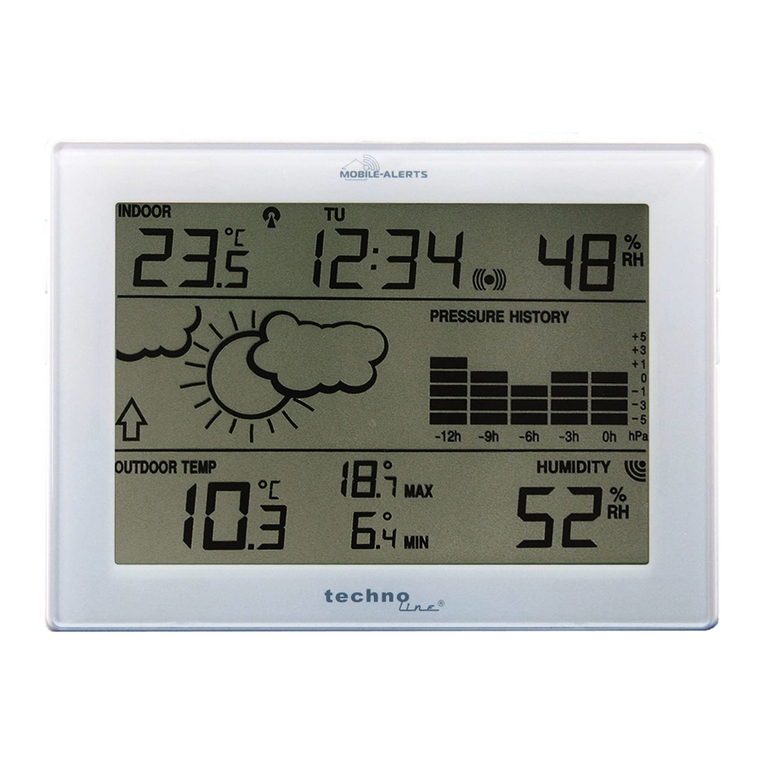
Instant Transmission
Instant Transmission MA 10410 instruction manual
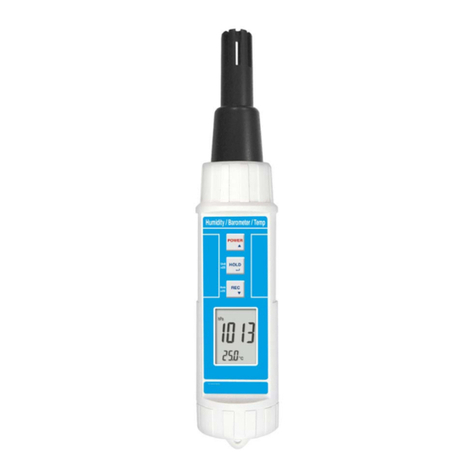
Lutron Electronics
Lutron Electronics PHB-318 Operation manual

Oregon Scientific
Oregon Scientific Alizé BAR266 user manual

Oregon Scientific
Oregon Scientific BAR206 user manual

Oregon Scientific
Oregon Scientific BA900 user manual
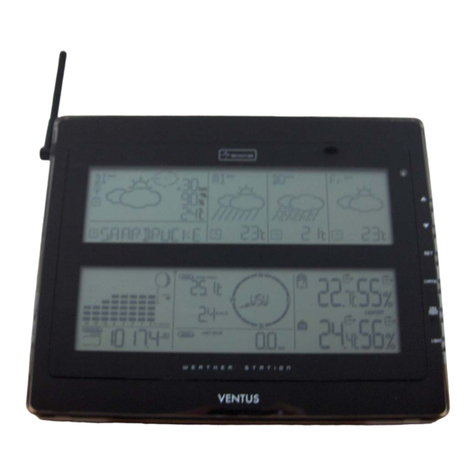
Ventus
Ventus W928-ULTIMATE user guide
